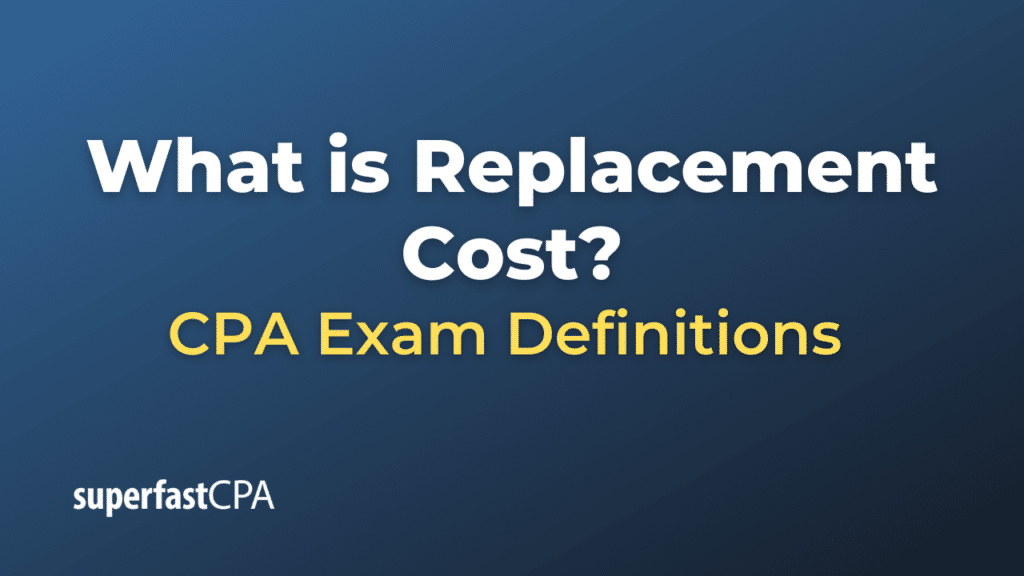Replacement Cost
Replacement cost refers to the current cost of replacing an asset at its present condition and capacity. Essentially, it’s the amount that would be required to replace an existing asset with a new one of similar utility and functionality, without considering any depreciation that might have been applied to the original asset.
Replacement cost is a key concept in various areas:
- Insurance : In property insurance, policies can offer coverage based on replacement cost, meaning that if there’s a loss, the insurance will cover the cost to replace the lost or damaged item with a new one, regardless of how old or depreciated the original item might have been.
- Accounting: In certain accounting approaches, assets can be valued at their replacement cost, rather than historical cost, to reflect their current market value.
- Inventory Valuation: In times of rising prices, businesses might use replacement cost to value inventory, as this may provide a more current and relevant valuation.
- Capital Budgeting: When planning for capital expenditures, businesses might consider the replacement cost of equipment to decide whether to replace or continue maintaining existing equipment.
It’s worth noting that replacement cost differs from:
- Historical Cost: This is the original cost of an asset, not considering its current market value or the cost to replace it.
- Net Book Value: This is the historical cost of an asset minus accumulated depreciation.
- Reproduction Cost: This refers to the cost of reproducing an exact replica of the asset, which might be higher or lower than the cost of buying a similar, modern asset.
Understanding the replacement cost is crucial for effective financial planning, especially in asset-intensive industries and for insurance purposes. It helps entities prepare for the financial implications of replacing assets when the need arises.
Example of Replacement Cost
Let’s delve into a fictional scenario that highlights the concept of replacement cost.
Lakeside Library, situated in a small town, has been a vital community hub for decades. Built 30 years ago, its structure and the original furniture, like wooden shelves and reading tables, have seen the wear and tear of time.
Recently, a water leak damaged a portion of the library, particularly affecting the old wooden shelves that housed historical books.
The library had insurance coverage based on the replacement cost principle.
- Historical Cost:
- The wooden shelves that were damaged were originally purchased 30 years ago at a cost of $5,000.
- Depreciated Value:
- Considering straight-line depreciation over an expected useful life of 50 years, the book value (or net book value) of the shelves at the time of the water leak would be $2,000.
- Replacement Cost:
- The library looks into replacing the damaged shelves. Due to inflation, changes in wood prices, and design enhancements, the cost of purchasing new shelves of similar quality and functionality today is $7,000.
Insurance Claim:
- If the library had insurance coverage based on historical cost, they would only receive a claim payout of $5,000 (the original cost of the shelves).
- If the insurance was based on the net book value , they would get only $2,000.
- However, because Lakeside Library’s insurance policy is based on replacement cost, they receive a claim payout of $7,000, allowing them to replace the damaged shelves with new ones without any additional financial burden.
Thanks to the replacement cost principle in their insurance policy, Lakeside Library can fully restore its interior to its original state without financial setbacks, ensuring that the community continues to enjoy its facilities.
This example demonstrates the importance and benefit of understanding and utilizing the replacement cost, especially in insurance. It offers protection against inflation and other factors that could increase the cost of assets over time.













